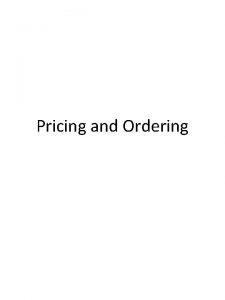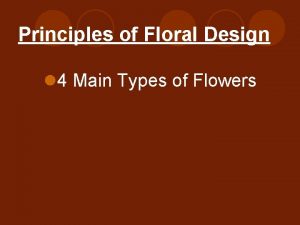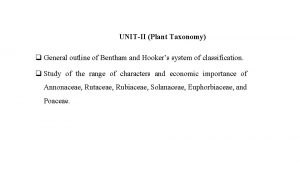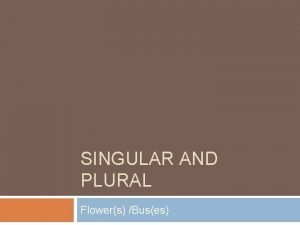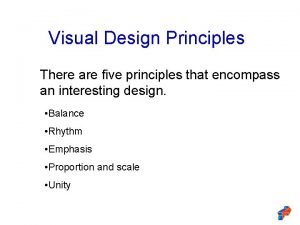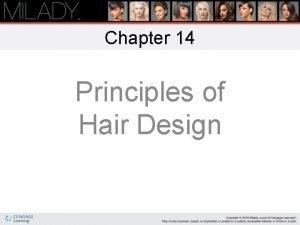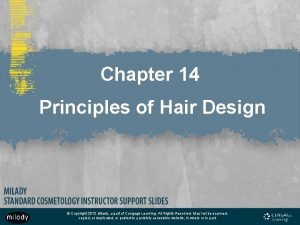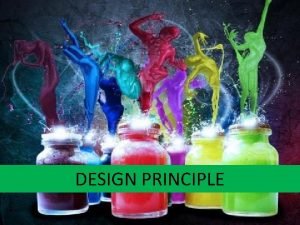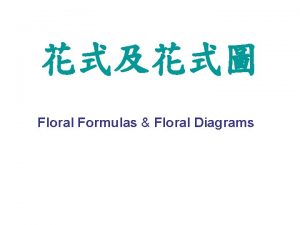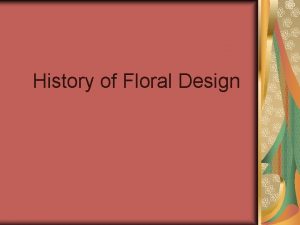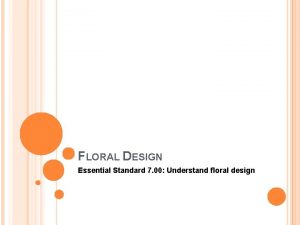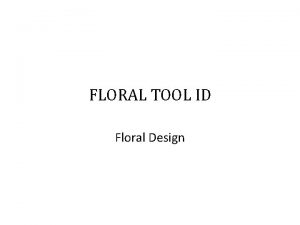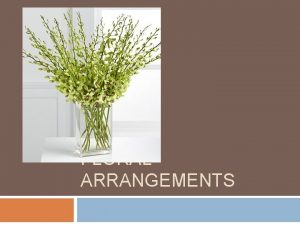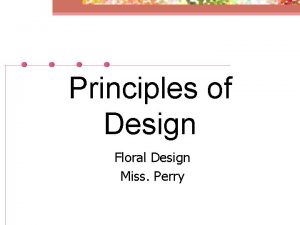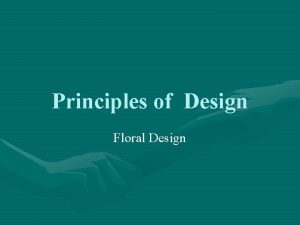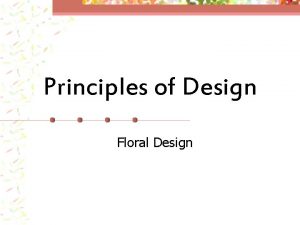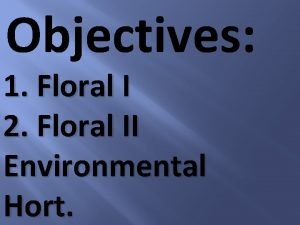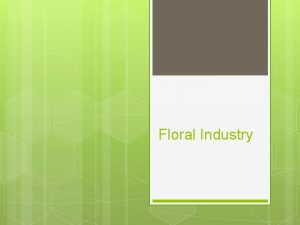Principles of Floral Design Topic 2111 Five Principles















- Slides: 15

Principles of Floral Design Topic #2111

Five Principles of Design • • • Balance Harmony (unity) Scale (proportion) Focal area/ focal point/ focus/ emphasis Rhythm

Balance • The actual weight or feeling of weight in a design. • Sense of stability and security • Achieved mechanically and visually

Aspects of Balance • Mechanical – distributing the mass of the design – top to bottom – side to side – follows central axis – void of flowers or a “leaning arrangement” will be unbalanced. • Visual – the way a person perceives mass or weight – becomes more visually balanced when the design is “heavier” near the base

Types of Symmetry • Symmetrical Balance • Asymmetrical – central axis is in the center Balance – – of the container radial symmetry bilateral symmetry biradial symmetry spiral symmetry – central axis to the side of center when viewed from front – one side of axis has more mass than the other – off-center placement of axis balances the unequal mass

Factors Which Influence Mass • Color – dark colors have more mass than light colors – General ratio guide- 3 white: 2 medium: 1 dark is balanced • Texture – bold items are heavier than feathery-textured items • Shape and Size – larger and taller flowers weigh more than smaller flowers • Lighting – affects color intensity

Harmony (Unity) • A blending together of design components (plant material, container, accessories, base, & background) • Very abstract • Depends on personnel preference

Scale (Proportion) • Size and shape relationships between: – the flowers and the other design components. – the container and the other design components. – the design itself and the space to be filled. • Rule of Thumb – design should be 1. 5 times the height/width of container

Rule of Thumb Exceptions • When the container is not a visible part of the design. • When using colors that appear to be more massive, they appear to be shorter.

Focal Area/ Focal Point • Mechanical – generally located at the base of the central axis – stems are directed toward the focal point – allows stems to appear as if they are growing naturally from a single source. • Visual – usually near the mechanical focal point – naturally draws the eye to the “heaviest” area of the design – strong visual focal point enhances the design

Rhythm • Intentional placement of materials to create a pleasing pattern • Four methods of creating rhythm – – Repetition Transition Facing Depth

Repetition • Repeating color, shape, lines, or size of components • Most commonly used method of achieving rhythm • Work with at least 2 stems of any particular flower variety

Transition • Gradual change in the placement or spacing of color, form, line, and scale within a design • More subtle way to create patterns • Gradually space flowers closer together as the eye travels down into the design

Facing • Facing of flower heads or other components • Best used in contemporary designs where stems are not all placed toward one mechanical focal point

Depth • The “in” and “out” eye movement created by placement of selected materials further into the design • May be of a particular color, shape, texture, or scale
 Jus2111
Jus2111 Mpep 2111
Mpep 2111 Floral pricing worksheet answer key
Floral pricing worksheet answer key It is the pleasing and congruent arrangement of parts
It is the pleasing and congruent arrangement of parts Transition floral design definition
Transition floral design definition Floral formula annona squamosa floral diagram
Floral formula annona squamosa floral diagram Plural flowers
Plural flowers Clincher examples
Clincher examples Narrowed down topic
Narrowed down topic What is graduated rhythm
What is graduated rhythm Design elements
Design elements Five elements of hair design
Five elements of hair design Directional lines in hair
Directional lines in hair The overall direction of a hair design can be analyzed
The overall direction of a hair design can be analyzed Five design principles
Five design principles And all its aching joys are now no more
And all its aching joys are now no more


